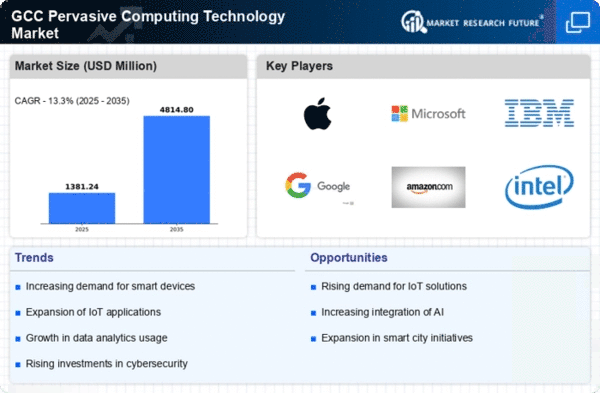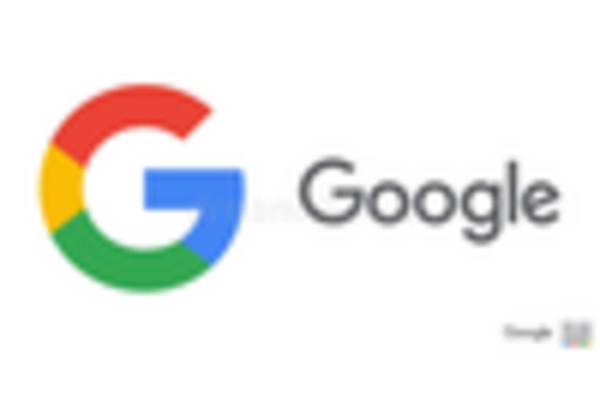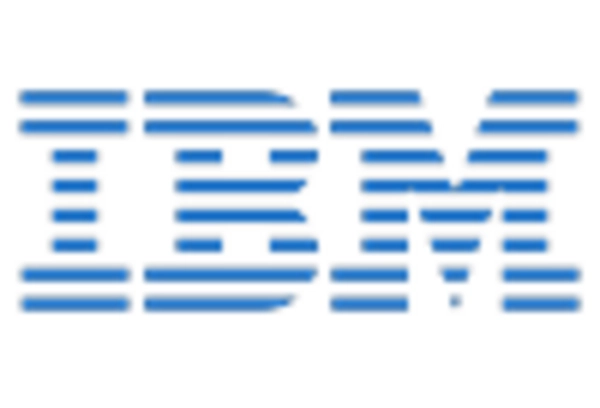Rise of Edge Computing Solutions
The rise of edge computing solutions is emerging as a pivotal driver for the pervasive computing-technology market. By processing data closer to the source, edge computing reduces latency and bandwidth usage, which is particularly beneficial for applications requiring real-time data analysis. In the GCC, the demand for edge computing is projected to grow by 35% over the next few years, as industries such as manufacturing, healthcare, and transportation increasingly rely on real-time data insights. This shift not only enhances operational efficiency but also supports the deployment of IoT devices, which are integral to pervasive computing. As organizations seek to optimize their operations and improve decision-making processes, the adoption of edge computing technologies is likely to accelerate, further propelling the market.
Government Initiatives and Support
Government initiatives play a crucial role in shaping the pervasive computing-technology market within the GCC. Various national strategies aim to promote digital transformation and innovation, which are vital for the growth of this market. For instance, the UAE's Vision 2021 and Saudi Arabia's Vision 2030 emphasize the importance of technology in enhancing economic diversification and improving public services. These initiatives often include funding for research and development, tax incentives for tech startups, and the establishment of innovation hubs. As a result, the market is likely to see increased investment, with projections indicating a potential growth rate of 25% over the next five years. Such supportive policies create a conducive environment for the development and adoption of pervasive computing technologies.
Growing Demand for Smart Home Solutions
The pervasive computing-technology market is significantly influenced by the growing demand for smart home solutions in the GCC. As consumers increasingly seek convenience, security, and energy efficiency, the adoption of smart home devices is on the rise. Market data suggests that the smart home segment is expected to grow by approximately 20% annually, driven by innovations in automation and IoT technologies. This trend is further supported by the increasing availability of affordable smart devices and the rising awareness of their benefits. Consequently, manufacturers and service providers are focusing on developing integrated solutions that enhance user experience, thereby propelling the pervasive computing-technology market forward. The integration of AI and machine learning into these solutions is also likely to enhance their functionality and appeal.
Advancements in Connectivity Infrastructure
The pervasive computing-technology market is experiencing a notable boost due to advancements in connectivity infrastructure across the GCC. Enhanced network capabilities, such as 5G deployment, are facilitating seamless communication between devices. This improved connectivity is essential for the proliferation of smart devices and applications, which are integral to the pervasive computing landscape. As of 2025, the GCC region is projected to witness a 30% increase in 5G adoption, significantly impacting the market. The ability to connect multiple devices in real-time enhances user experiences and operational efficiencies, thereby driving demand for pervasive computing solutions. Furthermore, investments in fiber-optic networks and satellite communications are expected to further strengthen the infrastructure, enabling a more robust environment for pervasive computing technologies.
Increased Focus on Sustainability and Energy Efficiency
The pervasive computing-technology market is witnessing an increased focus on sustainability and energy efficiency, driven by both consumer demand and regulatory pressures in the GCC. As environmental concerns become more prominent, there is a growing expectation for technology solutions to contribute to sustainability goals. This trend is reflected in the rising popularity of energy-efficient devices and systems that minimize environmental impact. Market analysis indicates that the demand for sustainable technology solutions is expected to grow by 40% in the coming years. Companies are increasingly investing in research to develop eco-friendly products and solutions that align with sustainability objectives. This shift not only enhances brand reputation but also opens new market opportunities, thereby driving growth in the pervasive computing-technology market.

















Leave a Comment